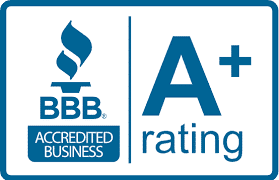
Pool screen enclosures don’t come fully assembled. They’re constructed onsite. Learn the different pool screen enclosure parts of a pool enclosure.
Florida neighborhoods are dotted with pool screen enclosures. These look a bit like screen porches, but they have greater variety in their style, size, and shape. Pool screen enclosures are built to surround and cover inground pools and their pool deck areas.
They don’t come pre-assembled. Instead, qualified contractors build them on-site. Homeowners choose the style and materials they want. This can involve several decisions about the different parts of a pool screen enclosure. Local zoning laws and building permit rules may define the types of materials required for a new pool screen enclosure.
Footing or Foundation
Enclosures require a solid foundation. If you already have a concrete pool deck, your contractor must determine if it meets the right thickness to support the frame of the enclosure. If not, they will pour a new concrete footing or foundation to the thickness required by zoning laws in your area.
Frame
Usually made of rust-resistant aluminum, the frame is the “skeleton” of your pool screen enclosure. Consisting of posts, beams, rails that run between the posts at the bottom of the enclosure, purlins, which are narrower strips of aluminum that run perpendicular to the beams to help form a roof, and a door, the frame forms the structure of your enclosure. It defines the roof style you have selected, either mansard, flat, gabled, domed, or sloped.
Anchors and Fasteners
The frame must be fastened to the concrete base with screws or fasteners that penetrate the concrete and hold the structure in place. These anchors help the frame resist wind.
Other fasteners attach the beams to the posts, framing to the structural gutters attached to the house, and screen panels to the frame.
If a section of the screen is damaged, a pool screen repair company can often fix just that panel, so you don’t have to replace the entire pool screening. All fasteners should be rust-resistant.
Screening
There is a variety of types of screening to select to fill the screen panels in the pool enclosure. Screening can be pet and insect-resistant, provide protection from UV light and the sun’s heat, and be treated to resist mildew and algae.
Durability should be a major consideration. Although you may pay more upfront for high-quality screening, the screen fabric will last longer and cost you less in repair and replacement over time.
Door and Door Lock
These may be among the most important parts of your pool screen enclosure. A major reason for building a pool screen enclosure is security and safety. Your enclosure and the door that provides access to it should prevent animals and children from getting into your pool unattended.
The door provides access to homeowners without patio doors and an escape route to safety if necessary. Local zoning regulations may specify the type and size of door required.
Pool screen enclosures aren’t just giant cages—they are complex structures with many different pool enclosure parts. Pool enclosures are designed to provide safety, security, protection from debris, insects, and animals, and resistance to wind and weather.
Call us today for FREE estimates! You won’t pay until we complete the job. See Our Google Reviews
We proudly serve the Central Florida Area including Orlando, Lakeland, Auburndale, Winter Haven, Tampa, Davenport, Kissimmee, and all towns in between. all cities in between.

